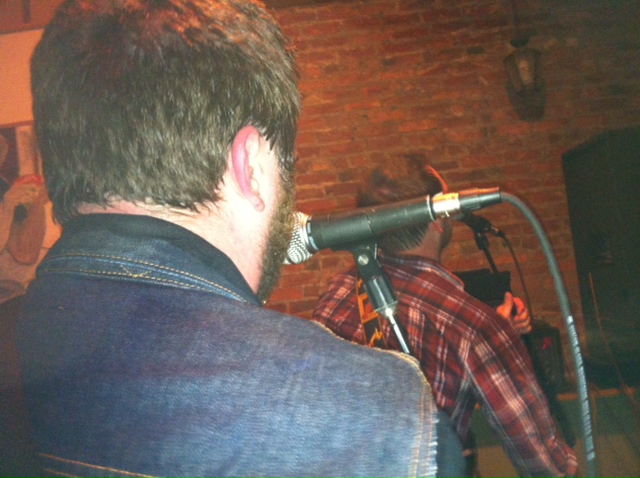 It’s been a while since you’ve heard from me, and for good reason. As my summer sabbatical draws to a close, so to does my writing process. That’s right, the book is in its final writing stage, the end is in sight!
It’s been a while since you’ve heard from me, and for good reason. As my summer sabbatical draws to a close, so to does my writing process. That’s right, the book is in its final writing stage, the end is in sight!
Of course, I still have the modest task of editing ahead of me, but I will be getting some help from friends over the coming weeks. I plan on having a finished, edited, designed eBook ready for publication in November 2012.
Though my original plan was to self-publish the entire book, I’m now thinking it’s strong enough to seek a real publisher. Besides, what have I got to lose? If I don’t get a publishing deal on favorable terms I am fully confident I can self-publish and reach a sizable audience on my own. Not sure if I’ll go all the way with a literary agent, but there are about a dozen publishers on my short list and a few connected people in the social network, so we’ll see what they think of the book… if I can get it through the door.
As I muddle out the release details, I’ve been sprinting to the writing finish line. A surprising portion of the writing process has essentially been rewriting, or editing as I go along. It seems like for every four paragraphs I put into the book, only one comes out. This is intentional because I want every sentence to be important and every paragraph to read well yet be packed with information. It’s almost more like sculpture than writing.
Another part of the original plan — to write a brief work of 150 pages or less — has steadily faded from view over the past weeks as the book pushes 200 pages and still has a way to go. A nontrivial part of that was my decision to include footnotes and annotations with the text. Part of the challenge of writing the book is leaving out highly illustrative details for the sake of clarity of prose, so the added notes give me the satisfaction of revealing deeper meaning to the concepts put forth. It’s turning in to a full-on non-fiction epic with hundreds of cited sources.
Lest I leave you with nothing but an update, I’d like to reveal a little glimpse into the finished product. While I’m still a ways from publishing excerpts (let’s wait until it’s edited), the organization of the chapters hasn’t changed in weeks so I’m confident that I’ve arrived at a final list.
Oh, and one last thing before I share the chapters. The name of the book will not be Mediapocalypse. While the book certainly takes a pessimistic view of the music industry, it is ultimately an optimistic book about rediscovering the true meaning and power of music, and using technology to eradicate the old, corrupt record business. Therefore, Mediapocalypse was relegated to a chapter title. So what is the new book title? For several reasons, I can’t tell you yet. But I guarantee it will spark a lot of controversy. Stay tuned!
CHAPTER LIST (with brief descriptions):
- Introduction– Why it’s time to change the way we think about music.
PART I – [title of the book which I’m not yet revealing]
- Chapter 1 – You Are the Music – Music exists within us, the music industry exists to control our access to it.
- Chapter 2 – Broken Records – How the business of recorded music cyclically destroyed and renewed our relationship to it.
- Chapter 3 – The First Song – Recent scientific research into the origins of music reveals how utterly central it is to the human experience on both individual and social levels. This is the evolutionary case for the true meaning and power of music in a world that views it merely as entertainment product.
PART II – A People’s History of the Music Industry
- Chapter 4 – Performance Anxiety – How the music industry emerged from performance in ancient societies, the church, and how music was redefined by a wave of pre-Industrial technologies (approx. 0AD-1875).
- Chapter 5 – His Master’s Voice – The invention of recorded music and the seedy origins of the modern music industry. (approx. 1875-1925).
- Chapter 6 – Around the Dial – Broadcast technology reshapes the industry as exploitation of recorded music and its artists reaches new heights (approx. 1925-1950).
- Chapter 7 – Low Ethics, High Fidelity – As technology advances, so too does systematic corruption within the music industry. A generation rediscovers the power of music only to relinquish control of culture to corporations. (approx. 1950-1975)
- Chapter 8 – The Diamond Industry – The obscene wealth of the music industry grows more consolidated, seemingly in direct relation to its ethical and cultural bankruptcy. (approx. 1975-2000)
- Chapter 9 – Napstermath – As digital technology shatters the industry’s control, the record business adopts litigation and lobbying as its primary business model, stagnating but not stopping the inevitable musical revolution. (approx. 2000-2010)
- Chapter 10 – Mediapocalypse – The end of the record business is the start of a brave new music industry. As we enter a markedly different new golden era of music driven by digital music technology, the old business model refuses to go quietly.
PART III – Listening to the Future
- Chapter 11 – The New Musician – Moving from exploitation to patronage by directly connecting with fans and growing in number and purpose, the new musician blurs the line between amateur and professional to the benefit of our culture.
- Chapter 12 – The New Listener – Interactive, participatory listening and a direct artist connection means today’s listeners are more involved in the music ecosystem than ever. We explore how the frequency, diversity and depth with which people listen to music is increasing.
- Chapter 13 – The New Industry – Examining survivors of the apocalyptic war on digital music, and the light at the end of the tunnel.
- Chapter 14 – Sound Visions – Educated guesses on trends in the near-future of music.
- Epilogue – Post-Music – Considering the heady implications of a post-music future, from singularity to apocalypse and everything in between.

